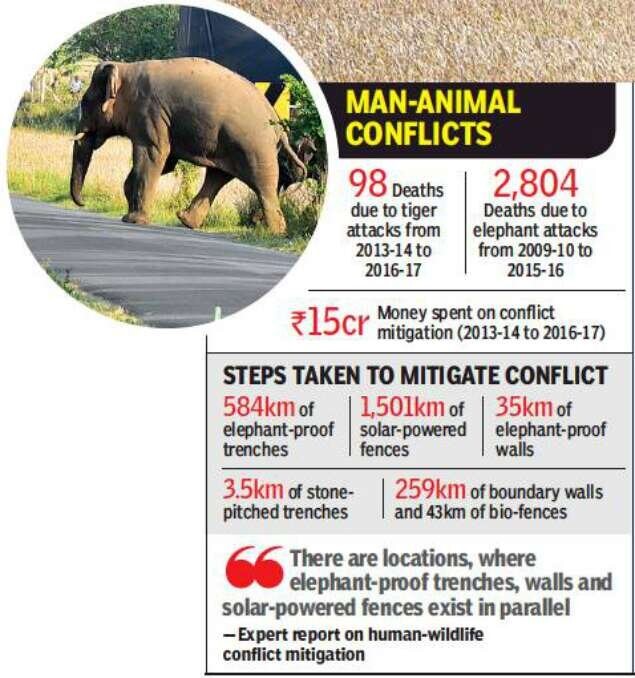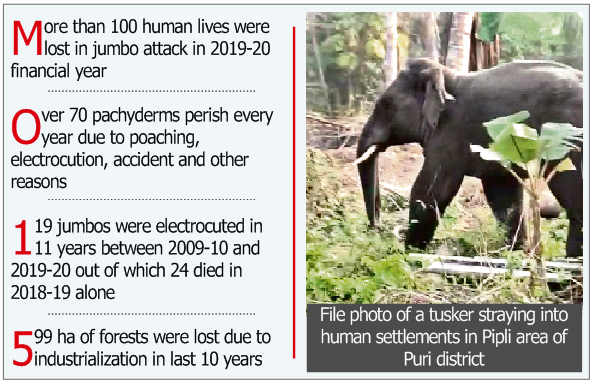Man-Animal Conflict

Copyright infringement is not intended
Context: In the wake of an increasing elephant menace in the forest areas of Kasaragod and Kanhangad forest range, the participation of local people is turning out to be a huge support for the Rapid Response Team (RRT), which had been struggling due to staff shortage.
Asian Elephant
- It is distributed througout the Indian subcontinent and Southeast Asia, from India in the west, Nepal in the north, Sumatra in the south, and to Borneo in the east.
- The Asian elephant is the largest living land animal in Asia.
- Since 1986, the Asian elephant has been listed as Endangered on the IUCN Red List.
- Elephant is National Heritage animal of India.
- It is primarily threatened by loss of habitat, habitat degradation, fragmentation and poaching.
- The Asian elephant is listed on CITES Appendix I.
- CITES (the Convention on International Trade in Endangered Species of Wild Fauna and Flora, also known as the Washington Convention) is a multilateral treaty to protect endangered plants and animals.
What is Man-Animal Conflict (MAC)?
It refers to the negative interactions between people and wild animals, with consequences for both people and their resources and wildlife and their habitats (IUCN 2020).
- Over 2,000 people in India were killed by elephants while tigers claimed over 200 lives in the last five years, according to data provided by the government.
Common Reasons:
- Competition for shared natural resources between people and wildlife
- Human population growth and the transformation of land use.
- shrinking forest cover, poaching, rapid and unplanned urbanization
- electrification penetrating into forest areas
- increasing road density
- destruction of natural animal corridors
- agricultural expansion and cultivation up to forest boundaries.
Consequences of MAC:
- Influences food security of people and the well-being of both people and animals.
- serious global threat to sustainable development and conservation in urban and rural landscapes.
- destruction of crops and reduced farm productivity
- competition for grazing lands and water, livestock predation, injury and death to farmers,
- damage to infrastructure and
- increased risk of disease transmission among wildlife and
Conflict mitigation strategies includes:
- Lethal control
- Translocation of problematic animals
- Predator-deterring guard dogs
- Effective land use planning
- Compensation
- Spatial analyses and mapping conflict hotspots:
- Erection of fences or other barriers
- Managing garbage to prevent attraction of carnivores
- Improving community education and perception of animals
- population size regulation and
- endangered species preservation
- applying scientific research, sociological studies, and the arts to reducing conflicts.
Existing government policies:
- The government has come up with some policies to grapple with the problem: The compensation for human deaths has been increased from Rs 2.5 lakh to Rs 5 lakh;
- Project Elephant and National Tiger Conservation Authority (NTCA) guidelines have been issued to mitigate the conflict.
- Immune-contraception has been introduced in order to control the population of nilgai, monkeys and wild boars.

Conclusion:
- Resolving human-wildlife conflicts and fostering coexistence requires well-informed, holistic, and collaborative processes that take into account underlying social, cultural and economic contexts.
- Government must explicitly include human-wildlife conflict in national policies and strategies for wildlife management, development and poverty alleviation.
- At the national level, cross-sectoral collaboration between forestry, wildlife, agriculture, livestock and other relevant sectors is key to tackle this menace.
https://www.thehindu.com/news/national/kerala/elephant-menace-participation-of-local-people-turns-out-to-be-huge-support-for-rapid-response-team/article36817435.ece?homepage=true



1.png)
